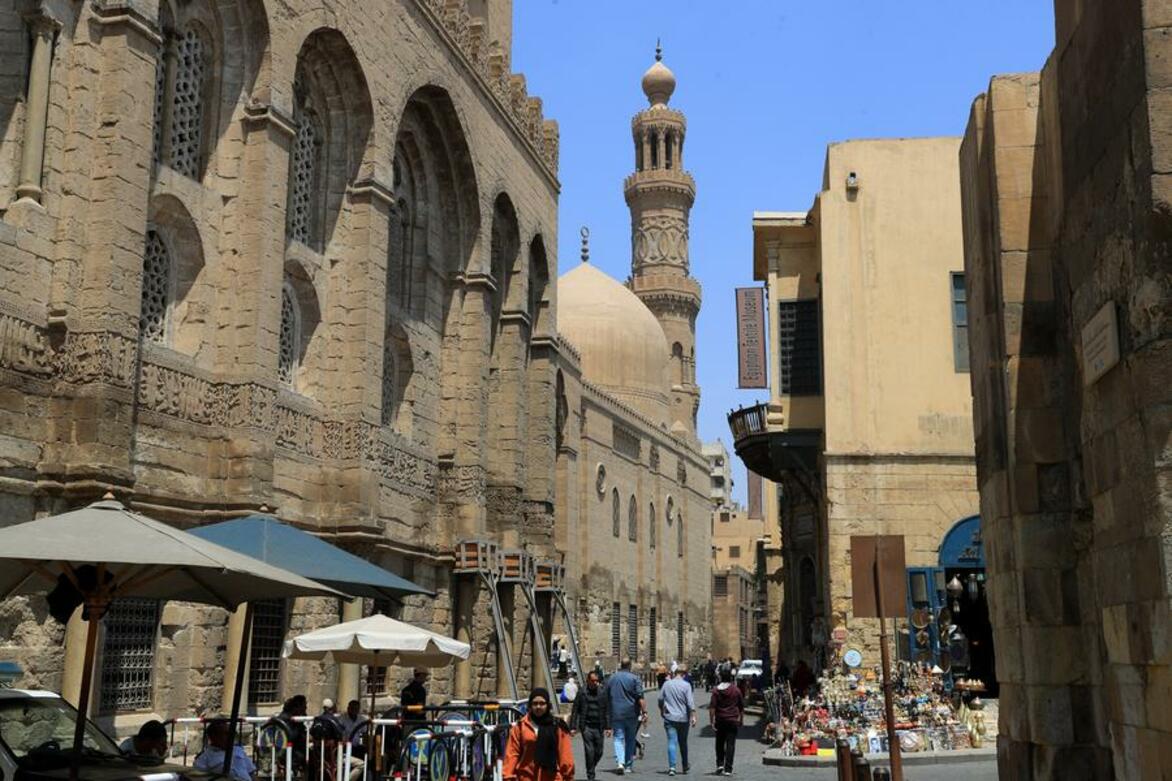Regeneration of historic Cairo sprays glamour to buildings, people
Xinhua
23 Apr 2025

CAIRO, April 23 (Xinhua) -- With its sea of minarets, centuries-old mosques, and timeworn alleys, Cairo -- a city steeped in history -- is undertaking a massive effort to protect and revitalize its cultural and architectural heritage.
"Cairo is one of the fewest Islamic capitals in the world that has been safeguarding its characteristics for more than one thousand years," said Mohamed Fouad, professor of Islamic Heritage at Cairo University. From majestic mosques to forgotten gates, the city's ancient structures are being revived through multiple heritage conservation projects.
One of them is the Urban Regeneration for Historic Cairo (URHC) project launched by Egyptian authorities in 2010 in collaboration with UNESCO. The initiative is designed not only to protect Cairo's architectural treasures, but also to preserve the urban fabric of its historic neighborhoods.
Believing that tangible heritage can only endure if it remains a part of everyday life, the project also seeks to improve the living conditions of the people who call these areas home.
One beneficiary is Medhat Othman, a man in his 60s who recently returned to his childhood neighborhood of Sayeda Zainab following its redevelopment. The neighborhood lies within the wider Historic Cairo zone, recognized as a UNESCO World Heritage Site since 1979 for its "absolutely unquestionable historical, archaeological, and urbanistic importance."
After restoration, the once-neglected area is now home to five-story buildings designed in traditional Islamic style, complete with mashrabiya -- the intricate wooden latticework iconic to Islamic architecture.
"Just a few years ago, my home was surrounded by sewage and garbage," Othman recalled. "Now, I live in a clean, well-serviced compound." He added that he paid only 7,000 Egyptian pounds (about 137 U.S. dollars) in registration fees, with a monthly rent of 650 pounds thereafter.
Still, revitalizing Cairo's ancient heart is no small task. According to Fouad, the effort demands substantial funding, infrastructure modernization, slum clearance, and the sensitive process of relocating or compensating long-term residents.
Another highlight of the URHC initiative is the transformation of Al-Muizz Street, the historic spine of Islamic Cairo. Named after Fatimid Caliph Al-Muizz li-Din Allah (953-975 AD), the 1,400-meter thoroughfare cuts through the core of Islamic Cairo and has been transformed into a vivid open-air museum, home to 29 historic monuments spanning from the 10th to the 19th century.
Hazem Gaber, antiquities inspector of Al-Muizz Street, told Xinhua that restoration of the street and its buildings has been continuously preserved and restored since 2010.
The URHC project aims to weave together Cairo's Islamic, Khedivial, and Fatimid legacies into a unified historical zone -- a living archive for residents and a vibrant destination for international visitors.
"Markets, vendors, local crafts stores, parking areas, and hotels in the Islamic style line up along Al-Muizz Street to attract tourists by adding the charm of this historic street," the Ministry of Tourism and Antiquities official told Xinhua.
Still, Gaber warned that more public awareness is needed to protect the area's unique atmosphere. Some modern buildings are violating height restrictions and disrupting the architectural harmony of the neighborhood, he said, noting that preserving the spirit of the place requires careful oversight.
Among the restored landmarks on the street is the Mosque of al-Hakim bi-Amr Allah, the fourth oldest mosque in Egypt and the second largest after the Mosque of Ibn Tulun. Moroccan tourist Ahmed Saeed was among those admiring its grandeur. As his child chased pigeons in the mosque's courtyard, he noted its layered past -- including its use as a barracks during the French campaign, when its minarets served as watchtowers.
"Al-Muizz Street has a unique atmosphere," Saeed said. "You can feel the weight of history in every step."
